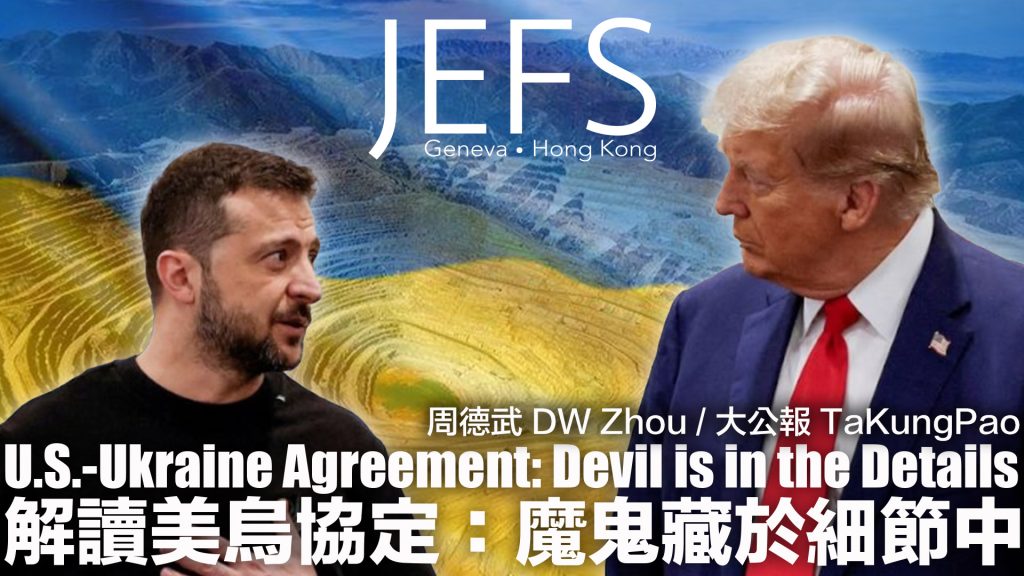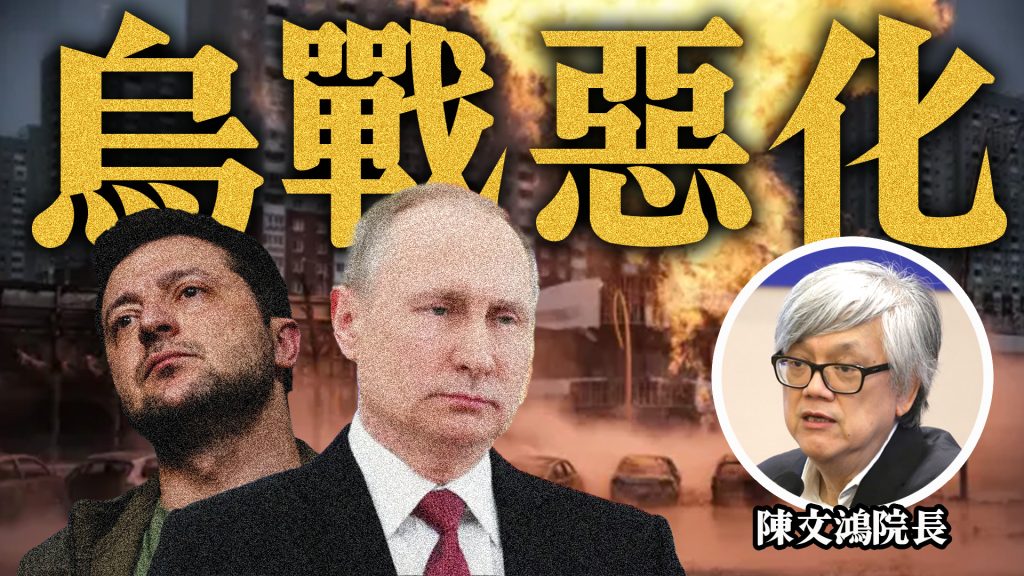On February 26, Ukrainian media first disclosed the full text of the U.S.-Ukraine “Minerals for Security” agreement, which consists of 11 articles. The core of the agreement is the establishment of a joint fund between the two countries, primarily funded by revenues generated from the monetization of Ukraine’s mineral resources. This fund will be jointly managed by both the U.S. and Ukraine, aiming to maximize U.S. economic interests and support Ukraine’s post-war reconstruction.

Ukraine claims that the latest version of the agreement removes terms unfavorable to them compared to the initial draft. Originally, Trump demanded that Ukraine use half of its mineral revenues to repay a “debt” of $500 billion to the U.S., requiring Ukraine to contribute $500 billion to the joint fund. However, Ukraine believes that U.S. military and financial aid amounts to just over $110 billion, which includes grants that cannot be counted as debt. The new agreement ultimately removed this clause, relieving Ukraine of the $500 billion contribution, making it feel as though it had struck a significant deal.
The new agreement stipulates that Ukraine must contribute half of the revenues from mineral, oil, gas development, and port infrastructure to the jointly established fund. The terms of U.S. contributions will be negotiated immediately between the two countries’ economic departments, culminating in the signing of the “Fund Agreement.” The framework agreement states: “The maximum proportion of fund equity and financial interests held by the U.S. government and the decision-making authority of U.S. representatives will be determined within the limits allowed by applicable law”; “Joint ownership will consider the actual contributions of the participants. The fund will be jointly managed by representatives of the Ukrainian and U.S. governments.”
Regarding Zelensky’s concerns about security guarantees, the U.S. agreed to include “U.S. support for Ukraine’s efforts for security guarantees and lasting peace,” although further guarantees remain vague. Trump clearly stated in the first Cabinet meeting on February 25, “I will not provide more security guarantees,” emphasizing that “this needs to be left to Europe.” This succinctly reflects Trump’s mindset, as he particularly stressed, “Forget about NATO, Ukraine.”
If the framework agreement is broad, the subsequent negotiations for the “Fund Agreement” will impose further constraints on Ukraine. Since it is a fund, it involves contribution ratios. There is no doubt that Ukraine will bear the larger share, as the agreement specifies that Ukraine must contribute half of its resource income to the fund, which clearly serves as “compensation” to the U.S. The agreement states: “The Ukrainian government will contribute 50% of the monetized revenue from all future related natural resource assets (whether directly or indirectly owned by the Ukrainian government) to the fund, which includes minerals, hydrocarbons, oil, gas, and other extractable materials, as well as other infrastructure related to natural resource assets (such as LNG terminals and port infrastructure).”
Regarding the U.S. contribution, the agreement clearly states, “The U.S. has provided substantial financial and material aid to Ukraine.” Trump claims that U.S. aid amounts to no less than $350 billion, while Ukraine acknowledges over $110 billion. Trump repeatedly emphasizes the need to “recoup taxpayer money,” and the U.S. Treasury likely will not go against Trump’s wishes; thus, the majority of that $110 billion will likely be counted as equity in the fund, commonly referred to as the U.S. holding “dry shares” in the new fund.
Since it is a fund, issues of reinvestment and dividends will arise. The U.S. clearly views Ukraine’s key minerals as a “goose that lays golden eggs.” Some media even speculate that Ukraine does not have that many mineral resources, suggesting that Zelensky has painted an overly optimistic picture for the U.S. Regardless of the actual mineral availability, geography textbooks have long made it clear, and the U.S. Cabinet is filled with economic elites and hedge fund leaders who are not easily fooled.
It is important to note that the U.S.-Ukraine framework agreement is highly exclusive. The agreement states: “Ensure that those countries and other parties that take adverse actions against Ukraine in the conflict will not benefit from the reconstruction after Ukraine achieves lasting peace.” In other words, countries deemed hostile by Ukraine will not be able to participate in future economic cooperation with Ukraine. Furthermore, the agreement stipulates that any responsibilities and obligations arising from Ukraine’s potential EU membership cannot jeopardize the normal operation of the fund; funds cannot be used to settle debts from disputes with other countries. This agreement essentially locks in U.S. economic gains, making it difficult for other countries to reclaim their debts from Ukraine.
Economic sovereignty is an important component of national sovereignty, and key minerals are a primary source of income for sovereign nations. With half of Ukraine’s future revenues from these resources required to be paid into the so-called joint fund, this effectively signals the loss of Ukraine’s economic sovereignty. On the surface, the fund is co-managed by both countries, but given the current asymmetry in power between the U.S. and Ukraine, how much say will Ukraine actually have?
On February 26, Zelensky threatened that if the U.S. did not provide security guarantees, he might not go to Washington to sign the agreement on Friday. Before he finished speaking, Trump announced that Zelensky had agreed to come to the U.S. to sign. Zelensky intended to make some tough statements for European and domestic audiences, but hours later, Trump publicly contradicted him, leaving Zelensky in a difficult position.
In this negotiation between the U.S. and Ukraine, Trump employed the old tactic of “maximum pressure,” demanding $500 billion from Ukraine. After the U.S. made some concessions, Ukraine joyfully celebrated what it perceived as a “huge concession” from the U.S., turning this tragic episode of “land for protection” into a comedy. Whose tragedy is this, after all?
DW Zhou / Chief Editor TaKungPao Hong Kong
讀美烏協定:魔鬼藏於細節中
2月26日,烏克蘭媒體率先披露了美烏“以礦產換安全”協議的全文,共11條。其核心是兩國成立共同基金,基金的構成主要是烏克蘭將礦產資源貨幣化之後所獲的收入,基金由美烏雙方共管,旨在將美方經濟利益最大化,以及用於烏克蘭的戰後重建。
烏方聲稱,與最初協議文本相比,最新版本刪去了不利於烏克蘭的條款。特朗普最初要求烏克蘭用礦產收入的一半,償還對美的5000億美元“欠款”,其做法是,烏方須向兩國成立的共同基金注資5000億美元。但烏克蘭方面認定,美國的軍援和財政援助加起來也就1100多億美元,這其中還包括美政府承諾的“贈款”,贈款不能算作債務。新協議最後刪去了這一條,不再要求烏克蘭向兩國成立的“共同基金”注資5000億美元,這讓烏克蘭如釋負重,好像撿了一個大便宜。
新協議要求,烏克蘭今後須將礦產、油氣開發及港口等基礎設施的收入一半注入到兩國共同設立的基金之中。而美方的出資形式,將由兩國經濟部門立即著手談判,並最終簽定《基金協議》。框架協議寫明:“美國政府持有的基金股權和金融權益的最高比例,以及美國政府代表的決策權,將在適用法律允許範圍內確定”;“共同所有權將考慮參與者的實際貢獻。該基金將由烏克蘭政府和美國政府代表共同管理”。
至於澤連斯基心心念念的安全保障問題,在烏方的要求之下,加進了“美方支持烏克蘭為安全保障及持久和平所作的努力”,至於更多的保障就顯得十分模糊了。特朗普在2月25日的第一次內閣會議上明確表示,“我不會提供更多的安全保障”,“這事得交給歐洲來做”。寥寥數言算是特朗普的心理話,特朗普特別強調,“烏克蘭忘掉北約吧。”
如果說兩國框架協議是粗線條的,那麼接下來美烏雙方展開的《基金協議》談判將會對烏克蘭作進一步限制。既然是基金,就涉及到出資比例。烏克蘭出大頭是毫無疑問的,協議已經寫明,烏克蘭必須將資源所得收入的一半貢獻出來,注入到基金之中,這部分款項顯然具有對美國的“補償”作用。協議寫明:“烏克蘭政府將把所有未來相關自然資源資產(無論烏克蘭政府是直接還是間接擁有)貨幣化所得收入的 50% 投入基金,這些資產包括礦產、碳氫化合物、石油、天然氣及其他可提取材料的礦床,以及與自然資源資產相關的其他基礎設施(如液化天然氣終端和港口基礎設施)。
至於美方的出資比例,協議開宗明義指出,“美國對烏克蘭給予了巨大的財政和物資援助”。特朗普聲稱,美國援助的數額不少於3500億美元。烏克蘭方面承認的數字是1100多億美元。特朗普反復強調,“要將美國納稅人的錢收回來”,美國財政部估計也不敢違反特朗普的旨意,這1100億美元的絕大部分恐怕要算在基金股權之內,也就是俗稱的美國持有新基金的“乾股”。
既然是基金,自然會涉及到今後的資金再投資以及分紅問題,美國顯然把烏克蘭的關鍵礦產視為“會生金蛋的鵝”。也有媒體甚至認為,烏克蘭根本沒有那麼多礦藏,這是澤連斯基給美國畫的大餅。不管怎麼說,烏克蘭是否有礦,地理課本里早已寫得很清楚,美內閣里充斥著許多經濟精英、對衝基金大佬,他們誰都不傻。
需要指出的是,美烏框架協議具有強烈的排他性。協議寫道:要“確保那些在衝突中對烏克蘭採取不利行動的國家和其他方,不會從烏克蘭實現持久和平後的重建中獲益。”換句話說,被烏克蘭認定具有敵對性質的國家就不要想參與今後與烏方的經濟合作了。此外,協議還規定,如果烏克蘭將來加入歐盟所產生的責任和義務,不能危及該基金的正常運作;與其他國家的債務糾紛也不能動用該基金的錢用來償還。這份協議基本鎖定了美國的經濟收益,讓其他國家很難從烏克蘭要回自己的債務。
經濟主權是一國主權的重要組成部分,而關鍵礦產是主權國家收入的主要來源,烏克蘭今後這類收入的一半必須上交給所謂的共有基金,基本上宣告了烏克蘭經濟主權的喪失。名義上看,基金由兩國共管,在美烏國力不對稱的當下,烏克蘭方面會有多少發言權?
澤連斯基2月26日威脅道,如果美方不給烏克蘭以安全保障,他週五有可能不去華盛頓簽署協議。話音未落,特朗普就宣佈,澤連斯基同意來美國簽字畫押。澤連斯基本想說幾句硬話讓歐洲和本國老百姓聽一聽,沒想到幾個小時之後就讓特朗普打了臉,讓其情何以堪?
在美烏這場談判中,特朗普獅子大開口,使出了“極限施壓”的老套路,張口就向烏克蘭索要5000億美元。在美方作出一點妥協之後,烏克蘭就歡天喜地慶祝“美方作了巨大讓步“,烏克蘭把這場“割地求保護”的悲劇再次演成了喜劇,這到底是誰的悲哀?
周德武 香港大公報 國際版 總編輯


